
Computational Particle Physics
Ab initio calculation of hadrons from quarks: Determination of fundamental parameters in Nature
 Numerical simulation of Quantum Chromodynamics (QCD) formulated on a space-time lattice is the only way to extract various properties of hadrons directly from the fundamental theory of quarks. Although a vast amount of computation is required, this provides us not only with a stringent test of the fundamental theory of Nature, but also with a direct determination of fundamental parameters in QCD, such as the quark mass and strong coupling constant, which cannot be measured by experiment because quarks are confined within hadrons.
Numerical simulation of Quantum Chromodynamics (QCD) formulated on a space-time lattice is the only way to extract various properties of hadrons directly from the fundamental theory of quarks. Although a vast amount of computation is required, this provides us not only with a stringent test of the fundamental theory of Nature, but also with a direct determination of fundamental parameters in QCD, such as the quark mass and strong coupling constant, which cannot be measured by experiment because quarks are confined within hadrons.
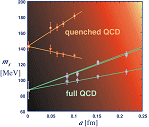 CCS has been one of the core institutes in computational particle physics through development of the dedicated parallel computer CP-PACS and its application to QCD. The right figure shows our result for the s quark mass, which implies a much lower value than previous estimates in the quenched approximation.
CCS has been one of the core institutes in computational particle physics through development of the dedicated parallel computer CP-PACS and its application to QCD. The right figure shows our result for the s quark mass, which implies a much lower value than previous estimates in the quenched approximation.
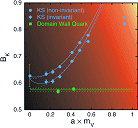
On the CP-PACS, we further investigated hadronic quantities which are difficult to evaluate in other methods. The left figure shows our result on the B-parameter for K meson mixing, which is relevant for the asymmetry between matter and anti-matter in the universe. We also promote studies on quark-gluon plasma and chiral fermions on the lattice.
Toward a full simulation of quarks
|
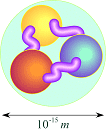 In most large-scale simulations in lattice QCD, only the
lightest u and d quarks were included dynamically, because
computation of dynamical quarks is demanding. On the
other hand, the next lightest s quark is also expected to
affect low energy physics since the s quark mass is
comparable with the energy scales of QCD. We have
started a grand challenge project to carry out simulations
including all u, d and s quarks correctly by concentrating
accessible supercomputers including the CP-PACS at CCS, VPP-5000 at ACCC Tsukuba, SR-8000 at KEK, and the Earth Simulator at JAMSTEC.
In most large-scale simulations in lattice QCD, only the
lightest u and d quarks were included dynamically, because
computation of dynamical quarks is demanding. On the
other hand, the next lightest s quark is also expected to
affect low energy physics since the s quark mass is
comparable with the energy scales of QCD. We have
started a grand challenge project to carry out simulations
including all u, d and s quarks correctly by concentrating
accessible supercomputers including the CP-PACS at CCS, VPP-5000 at ACCC Tsukuba, SR-8000 at KEK, and the Earth Simulator at JAMSTEC.
|
Computational Astrophysics
Evolution of the Universe and Formation of Astronomical Objects
A wide variety of astronomical objects in the universe are formed under a highly non-linear environment where gravitational, hydrodynamic, and radiative processes play significant roles in a complicate fashion. To analyze such a complex system numerical simulations by high-performance computers are quite effective.
We study the formation of cosmic structure, galaxies and stellar/planetary systems, using radiation hydrodynamics (RHD) which includes gravitational, hydrodynamic, and radiative processes self-consistently.
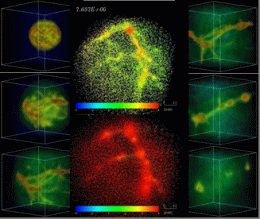 |
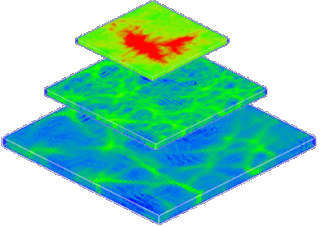 |
3D RHD simulation on the galaxy
formation by HMCS (CP-PACS+GRAPE).
|
3D radiative transfer calculation on
the cosmic reionization by CP-PACS |
"Computational Observatory"
To make a giant advance in astrophysics supported by theory and observation by state-of-the-art facilities, we advocate a plan of "Computational Observatory" in which theory is directly confronted with observations through extensive numerical simulations.
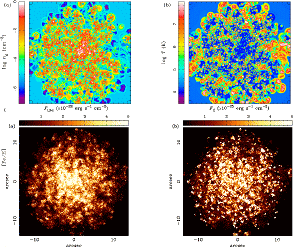 |
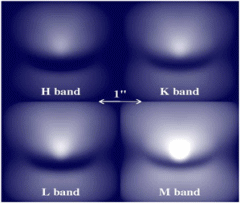 |
| Ultra-high resolution hydrodynamic simulation by CP-PACS on a galaxy at formation stage and observable images.
|
Observable images of a protostar by radiation transfer calculations by CP-PACS. |
|